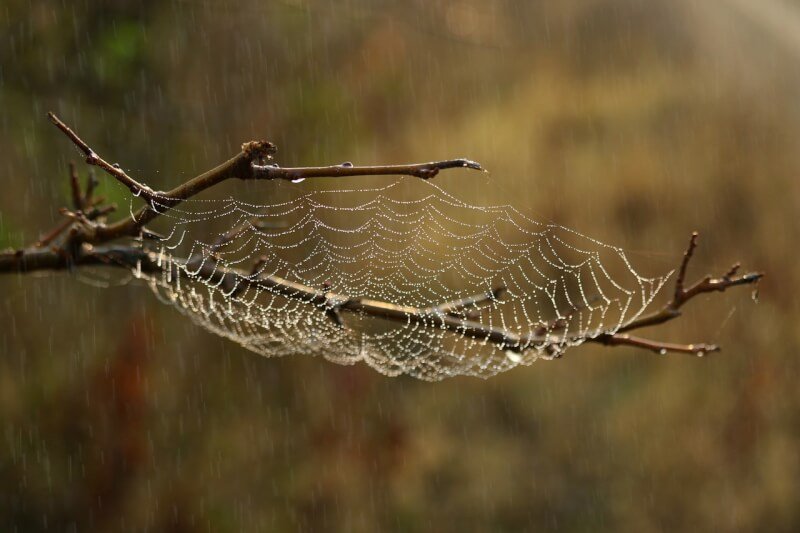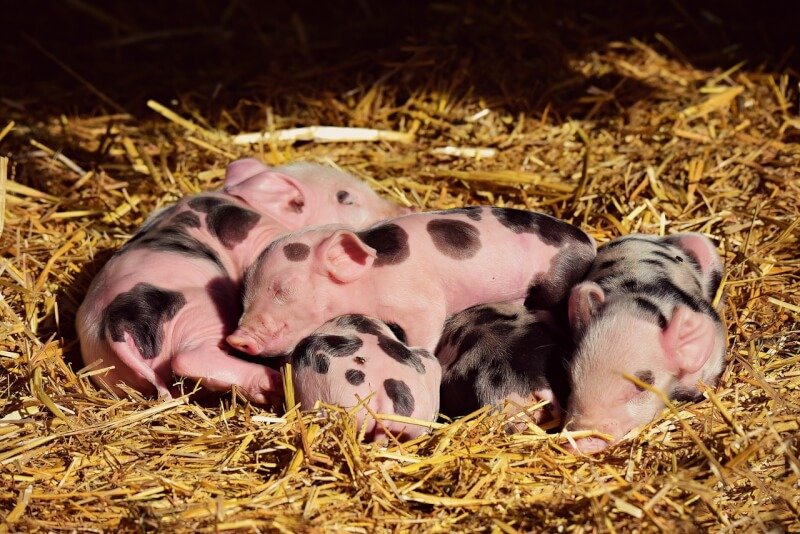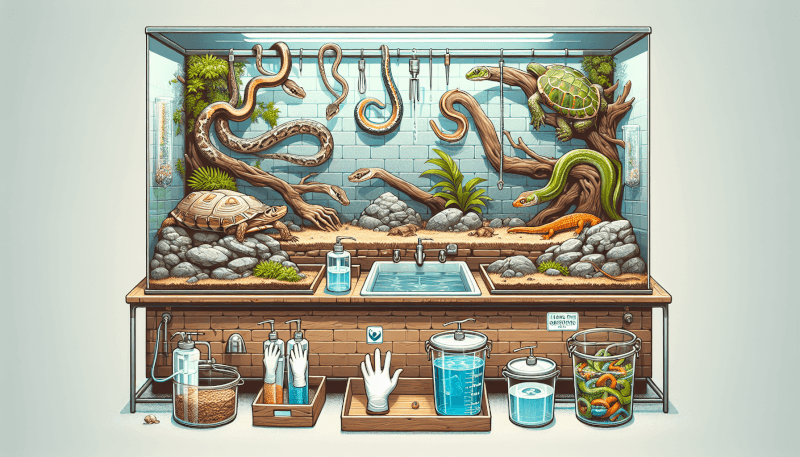In this comprehensive guide, you will discover everything you need to know about maintaining a healthy and secure habitat for your reptilian friends. From expert tips on sanitation and hygiene practices to essential measures for preventing and managing diseases, this ultimate resource will empower you to ensure the well-being and longevity of your reptile’s environment. Explore the fascinating world of reptile habitat biosecurity and embark on a journey to become the best custodian for your scaly companions.

Understanding Biosecurity
What is biosecurity?
Biosecurity refers to the measures and practices that are used to prevent the entry, spread, and establishment of infectious diseases and pests within a living organism or a specific environment. In the context of reptile habitats, biosecurity is essential for maintaining the health and well-being of the reptiles as well as preventing the transmission of diseases to other animals and humans.
Why is biosecurity important for reptile habitats?
Biosecurity is of utmost importance when it comes to reptile habitats due to the unique nature of their environment and the potential risks they pose. Reptiles, such as snakes, lizards, and turtles, can carry a wide range of harmful bacteria, viruses, and parasites that can cause diseases not only in reptiles themselves but also in humans and other animals. By practicing biosecurity, reptile owners can minimize the risks of disease transmission, prevent outbreaks, and ensure the overall health and longevity of their reptile friends.
The risks of not practicing biosecurity
Not practicing biosecurity in reptile habitats can have significant consequences. Without proper biosecurity measures, reptiles are more susceptible to diseases and parasites that can compromise their health and even lead to death. Moreover, if a reptile becomes infected with a contagious disease, the risk of transmission to other reptiles, humans, and pets increases exponentially. The absence of biosecurity can also result in the introduction and spread of invasive species, posing further threats to ecosystems and biodiversity.
Preparing a Reptile Habitat
Choosing the right location
The first step in creating a biosecure reptile habitat is to carefully choose the right location. Consider factors such as temperature, sunlight exposure, and humidity levels to ensure the habitat mimics the reptile’s natural environment. Avoid placing the habitat near drafty areas, direct sunlight, or areas of high foot traffic to minimize stress on the reptile and potential exposure to external contaminants.
Designing a biosecure enclosure
When designing a biosecure enclosure for a reptile, it is crucial to consider factors such as containment, ease of cleaning, and prevention of potential escape. The enclosure should be secure, with no gaps or openings that could allow pests or parasites to enter or the reptile to escape. Opt for materials that are easy to clean and sanitize, such as glass or plastic, and ensure proper ventilation to maintain a healthy airflow.
Selecting appropriate substrate
Choosing the right substrate is essential for maintaining a clean and biosecure reptile habitat. Avoid using substrates that retain moisture or harbor bacteria and fungi, as these can contribute to the growth of pathogens and compromise the reptile’s health. Opt for substrates such as reptile-safe paper or synthetic materials that are easy to clean and do not pose a risk of ingestion or impaction.
Providing proper lighting and temperature
Proper lighting and temperature are vital for the health and well-being of reptiles. Research the specific lighting requirements of your reptile species and provide adequate UVB and heat sources to mimic their natural environment. Installing thermostats and timers can help maintain stable temperature and lighting conditions, ensuring the reptile’s comfort and optimal health.
Ensuring good ventilation
Good ventilation plays a crucial role in maintaining a biosecure reptile habitat. Proper airflow helps prevent the buildup of harmful gases, such as ammonia from waste products, and reduces the risk of respiratory infections. Ensure that the enclosure has adequate ventilation openings or use fans or vents to promote air circulation and maintain a fresh and clean environment for the reptile.

Managing Reptile Health
Quarantine protocols
Quarantine protocols are an essential aspect of biosecurity when introducing new reptiles to an existing habitat or acquiring reptiles from different sources. Quarantine allows for the observation and identification of any potential health issues or diseases that the new reptile may carry. Isolate new arrivals in a separate enclosure for a minimum of 30 days, monitor their health closely, and consult with a veterinarian if any signs of illness are observed before introducing them to the main habitat.
Regular health checks
Regular health checks are crucial for maintaining the overall well-being of reptiles. Perform thorough examinations of your reptile, including visual inspection, checking for any abnormalities, and monitoring its appetite, behavior, and waste output. Regularly assess the reptile’s weight and condition to detect any signs of illness or changes in health. Veterinary check-ups should be scheduled at least once a year or whenever any concerns arise.
Common reptile diseases and prevention
Reptiles can be susceptible to a variety of diseases, including respiratory infections, metabolic bone disease, parasites, and viral infections. Understanding the common diseases that affect reptiles and their prevention is key to maintaining a biosecure habitat. Provide a balanced and species-appropriate diet, maintain proper hygiene, and avoid overcrowding or housing reptiles of different species together to minimize the risk of disease transmission.
Proper feeding and nutrition
Feeding reptiles a well-balanced and nutritious diet is essential for their health and immune system. Research the specific dietary requirements of your reptile species and provide a variety of suitable food items, including insects, plants, and, for some species, rodents. Avoid feeding live prey as it can pose a risk of injury or disease transmission. Additionally, ensure that the food is properly cleaned and stored to prevent contamination.
Cleaning and Disinfecting
Importance of regular cleaning
Regular cleaning is crucial for maintaining a clean and biosecure reptile habitat. Cleaning removes dirt, waste, and bacteria, reducing the risks of disease transmission and maintaining a healthy environment for the reptile. Following a consistent cleaning schedule ensures that potential pathogens are not given the opportunity to contaminate the habitat and compromise the health of the animals.
Choosing the right disinfectant
When selecting a disinfectant for reptile habitats, it is essential to choose one that is effective against a wide range of pathogens but safe for both reptiles and humans. Avoid disinfectants with strong odors or toxic ingredients that can harm the reptile or leave harmful residues. Consult with a veterinarian or reptile specialist to choose a disinfectant that is suitable for your specific reptile species and habitat materials.
Cleaning protocols for different habitat components
Different habitat components require different cleaning protocols to ensure thorough disinfection. Non-porous items such as glass enclosures can be cleaned with a reptile-safe disinfectant and rinsed thoroughly. Porous items such as wood or rocks may require more extensive cleaning, including soaking in a disinfectant solution or baking in an oven to kill any pathogens. Follow manufacturer guidelines and consult with experts for specific instructions on cleaning different habitat components.
Preventing cross-contamination
To prevent cross-contamination between reptiles, it is crucial to practice proper hygiene and follow a strict cleaning routine. Use separate equipment, such as feeding utensils and cleaning tools, for each reptile enclosure. Wash hands thoroughly before and after handling different reptiles or their habitat components to minimize the transfer of potential pathogens. Additionally, avoid wearing the same clothing or shoes in different reptile areas to prevent cross-contamination from one habitat to another.

Controlling Pests
Identifying common reptile habitat pests
Pests can pose a significant threat to reptile habitats as they can introduce diseases, cause stress to the reptiles, and damage the enclosure. Common pests in reptile habitats include mites, ticks, fleas, and various types of insects. Familiarize yourself with the signs of pest infestation, such as itchy reptiles, visible pests, or unusual behavior, and take immediate action to address the issue.
Preventing pest entry and infestation
Preventing pest entry and infestation is essential for maintaining a biosecure reptile habitat. Ensure that the habitat is properly sealed and free from any cracks or openings that pests can use to enter. Regularly inspect the habitat for signs of pests and take immediate action if any are detected. Additionally, avoid using substrate or plants that may attract pests and maintain proper cleanliness and hygiene to discourage pest infestation.
Safe and effective pest control methods
If a pest infestation occurs, it is essential to address the issue promptly using safe and effective pest control methods. Avoid using chemical pesticides or insecticides that can harm the reptile or leave harmful residues. Instead, consider using non-toxic alternatives, such as diatomaceous earth, natural repellents, or biological control methods. Consult with a veterinarian or pest control professional for guidance on the most suitable pest control methods for reptile habitats.
Safe Handling and Visitor Protocols
Proper reptile handling techniques
Proper reptile handling techniques are essential to ensure the safety of both the reptile and the handler. Always approach the reptile calmly and confidently, avoiding sudden movements or loud noises. Use appropriate handling tools, such as gloves or hooks, if necessary, to prevent injury to both the reptile and yourself. Never handle a reptile that is showing signs of stress or aggression, and always wash your hands thoroughly after handling any reptile.
Protective measures for visitors
When allowing visitors to interact with your reptiles, it is crucial to establish protective measures to prevent the transmission of diseases or other contaminants. Provide hand hygiene stations with soap and water, hand sanitizers, or disposable gloves for visitors to use before and after handling reptiles. Ensure that visitors do not bring any food or drink into the reptile area to prevent potential contamination. Educate visitors about proper reptile handling techniques and encourage them to respect the reptiles’ natural behaviors and boundaries.
Educating visitors about biosecurity
Educating visitors about biosecurity is essential to create awareness and promote responsible reptile ownership. Display informative signage or pamphlets in the reptile area, explaining the importance of biosecurity measures and providing guidelines for proper handling and hygiene. Engage visitors in conversations about biosecurity and answer any questions they may have. By educating visitors, you can contribute to the overall understanding and adoption of biosecurity practices among reptile enthusiasts.

Travel and Exhibition Biosecurity
Precautions for transporting reptiles
When traveling with reptiles, it is crucial to take necessary precautions to ensure their safety and minimize the risk of disease transmission. Use secure and properly ventilated transport containers or carriers that maintain a stable temperature and protect the reptile from stress or injury. Avoid overcrowding and ensure that each reptile has adequate space during transportation. Keep the transport containers clean and disinfected to prevent the spread of potential pathogens.
Biosecurity protocols for reptile exhibitions and shows
Reptile exhibitions and shows bring together reptile enthusiasts from various backgrounds, presenting an opportunity for disease transmission if biosecurity protocols are not followed. Event organizers should implement biosecurity measures, such as requiring health certificates for all participating reptiles, providing hand hygiene stations, and limiting direct contact between reptiles and visitors. Regular cleaning and disinfection of display areas and equipment should also be carried out throughout the event to ensure a safe and biosecure environment.
Biosecurity for Multiple Reptiles
Separating reptiles based on health status
When housing multiple reptiles, it is important to separate them based on their health status to prevent disease transmission. Quarantine new arrivals in a separate enclosure and monitor their health closely before introducing them to the other reptiles. If a reptile becomes sick, isolate it from the healthy individuals to minimize the risk of spreading the disease. Regularly assess the health status of each reptile and consult with a veterinarian if any concerns arise.
Preventing disease transmission among reptiles
To prevent disease transmission among reptiles in a multi-reptile habitat, practice good hygiene and sanitation. Regularly clean and disinfect common areas, feeding utensils, and, if necessary, provide separate feeding stations for each reptile. Avoid using shared water sources and ensure that each reptile has access to fresh and clean water. Monitor the health of all reptiles closely and seek veterinary assistance if any signs of illness or disease transmission are observed.
Quarantine strategies
Quarantine strategies are essential for minimizing the risk of disease transmission in a multi-reptile habitat. When introducing a new reptile to an existing group, keep it isolated in a separate enclosure for a minimum of 30 days and observe its health closely before integrating it with the others. During quarantine, monitor the new reptile for any signs of illness or disease and consult with a veterinarian for proper diagnosis and treatment if needed. Adhering to quarantine strategies can significantly reduce the risk of introducing diseases to an existing reptile group.

Emergency Preparedness
Creating an emergency plan
Creating an emergency plan is crucial for being prepared in case of any unforeseen events or health emergencies involving reptiles. Identify potential emergency situations such as power outages, natural disasters, or reptile-specific health crises, and develop a plan outlining the necessary steps and actions to be taken. This plan should include contact information for a reptile-experienced veterinarian, nearby emergency veterinary clinics, and any other relevant resources.
Isolation protocols for sick reptiles
In the event that a reptile becomes sick, it is important to have isolation protocols in place to prevent the spread of any potential disease. Immediately separate the sick reptile from healthy individuals and provide it with a comfortable and hygienic isolation enclosure. Consult with a veterinarian for a proper diagnosis and treatment plan, and strictly follow the recommended isolation protocols until the reptile recovers and tests negative for any contagious diseases.
Contacting a veterinarian in case of emergencies
Having a veterinarian who specializes in reptile health and emergencies is essential for the well-being of reptiles. Keep the contact information of a reptile-experienced veterinarian readily available and be aware of their emergency hours and procedures. In case of any emergency involving a reptile, contact the veterinarian immediately for guidance and assistance. Prompt veterinary care can significantly improve the chances of a positive outcome in emergency situations.
Educating Reptile Owners
Informing reptile owners about biosecurity practices
Educating reptile owners about biosecurity practices is crucial for promoting responsible pet ownership and preventing disease outbreaks in the reptile community. Provide comprehensive information and resources on the importance of biosecurity, including proper habitat setup, hygiene practices, and disease prevention measures. Offer workshops, seminars, or online resources that focus on different aspects of biosecurity, tailored to specific reptile species or groups.
Training programs and resources for reptile owners
Training programs and resources are valuable tools to help reptile owners understand and implement biosecurity practices effectively. Offer training programs or online courses that cover topics such as habitat setup, cleaning and disinfection protocols, proper reptile handling, and disease prevention. Provide easily accessible resources, such as educational materials, videos, or forums, where reptile owners can seek guidance, share experiences, and stay updated on the latest biosecurity practices.
By following these comprehensive guidelines for reptile habitat biosecurity, you can ensure the health and well-being of your reptiles, prevent disease transmission, and contribute to the overall welfare of the reptile community. Remember, biosecurity is a collective effort, and practicing responsible ownership plays a crucial role in safeguarding the welfare of reptiles and maintaining a sustainable ecosystem.

